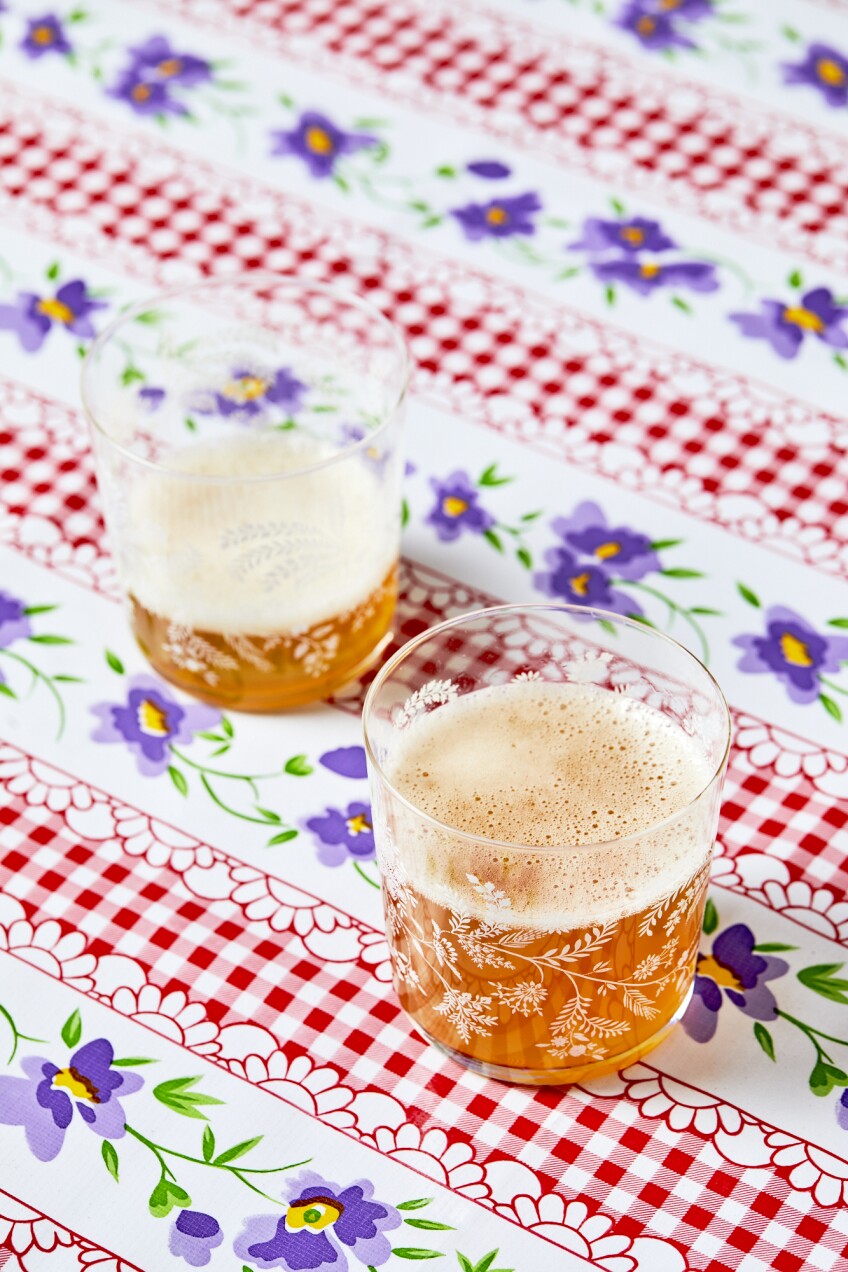
From Vodka to Kvass: A Guide to Russian Imbibing
This story is published in partnership with Life & Thyme.
Crack open some Russian literature or poetry and you won't get far without a scene involving imbibing. Russians love to drink — from sour, fermented concoctions to celebratory sparklers. Gogol described exotic flavors of infused vodkas, Tolstoy's characters drank sparkling wine, and Pushkin introduced jugs of bilberry wine to the literary table. Alcohol, or any drink that encouraged gathering, fueled the buzzing minds of generations of authors, artists and thinkers.
Russian drinking habits have even altered the course of history. The "Primary Chronicle," the oldest written document about Russia, tells the story of the ninth century's Grand Prince Vladimir's attempt to unify his lands under one religion. Apparently feeling restricted by Judaism's refusal of pork and Islam's abstinence from alcohol, he ultimately claimed Orthodox Christianity as the religion of the land, declaring "drinking is the joy of the Rus!"
Quench your thirst and channel some Tchaikovsky-level creativity with one of these Slavic refreshments.
Vodka
No account of Russian drinking practices overlooks vodka. It's stereotypical, perhaps, but it's a beloved spirit that dates back centuries. Through the rise and fall of leaders, the ebb and flow of religion, vodka remains in the glass. The name itself is an affectionate play on the Russian word for water — voda — proof that vodka remains essential to life.

No shot of vodka is complete without food, preferably an entire table of zakuski, the array of small dishes that precede a meal. And when it comes to clinking glasses, no simple "Na zdarovye!" will do. Toast like a true Russian, with a long, heartfelt ode to the company you're keeping. Drink to the last drop in the glass, all at once, and repeat.
Vodka Infusions
Vodka infusions are varied, seasonal and regional. Whatever is delicious and plentiful tinges the spirit — like black currant, birch, wild strawberry, mushroom or horseradish. They often sport a unique name depending on the ingredient with which it's infused. Like the buffalo grass Zubrovka, or Ukrainian honey and peppercorn varenukha.

Originally considered medicinal, the cures spanned a multitude of ailments. "In Nikolai Gogol's 'Old World Landowners,'" says Darra Goldstein, Professor Emerita of Russian at Williams College, "there's this beautiful scene where the hostess brings out all these different vodkas to taste. If you have shingles or if you have a bump on your head or if your shoulder blade's aching, she has a different infused vodka for you to have that will remedy it immediately."
More Stories of Food from Around the World
Kvass
Kvass is a lightly alcoholic beer made from fermenting black rye bread. Goldstein explains kvass "ranks second only to vodka as a popular libation," adding, "in a unique 19th-century religious sect, it outranked even vodka. The believers were known as kvasniki since they eschewed all drinks except kvass."

Originally brewed in monasteries and predating vodka, this drink came to be sold in the Soviet streets by the truckload, doled out to masses of thirsty proletariat workers.
In an unlikely departure from most libations, kvass can also be used as a soup base. Called okroshka, the beer forms the cold broth around chopped cucumber, hard-boiled egg and dill.
Wine
Georgia produces the best wines in the former Soviet Union and is thought to be one of the oldest wine-producing regions in the world. From spicy, salty reds to musky, amber-colored skin-contact whites, many are fermented and aged in underground earthenware vats called qvevri. Alongside grapes like Kindzmarauli (Stalin's favorite) and Rkatsiteli grow French varietals imported by Peter the Great.

Russians will say once a bottle (not exclusive to wine) is opened, it must be finished. They are never ones to waste a drop. In one somewhat extreme example, during the Russian Revolution, the Bolsheviks' dispatching of the Romanov family set off a month-long community binge of the Winter Palace's wine cellar. The pillagers and revelers reportedly drank the equivalent of 75 million in today's dollars worth of fine royal wine.
Sbiten'
The most ancient drinks involve Russia's plentiful sweetener: honey. Sbiten', a hot punch made with honey and spices (and often vodka or brandy), was an extremely popular beverage sold from the backs of street vendors. The samovar, known today as the iconic method for heating and serving Russian tea, brewed sbiten' for hundreds of years prior to tea's rise in popularity.

Tea
The samovar, an ornate metal urn used to boil and dispense water, is an essential component to Russian hospitality and culture. According to Goldstein, "it is always kept burning, ready to refresh guests with a cup of hot tea." The contraption itself was first introduced by Mongol hordes during the 13th century, and resembles a Mongolian hot pot. Tea was similarly introduced from the East, in 1638 by the Mongol Khan Altyn-Khan, and embraced as an indispensable refreshment. The Russian tea experience inspired the establishment of lavish, decorative tea rooms, models of sophistication copied across the world. Similar to vodka, tea always accompanies a spread of nibbles and sweets. Russians love to stir into their tea a spoonful from one of the jams on offer.

Champagne
During the Tsars, French cuisine was the height of fashion. Many royal families employed French chefs, and the popularity of champagne boomed. Inspired to make a Russian sparkling wine, Prince Lev Golitsyn planted vines in Crimea and crafted the first Russian sparkling wine. His bottle went on to win the Grand Prix de Champagne at the 1900 Paris World's Fair, defeating all the French entries in a blind taste test. His winery didn't last through the Revolution.

In Soviet years, when just having food on the table was cause for celebration, the government pushed a new, cheap Sovetskoye Shampanskoye (Soviet Champagne) created "for the people," commodifying a luxury previously only known to the upper crust of society.





